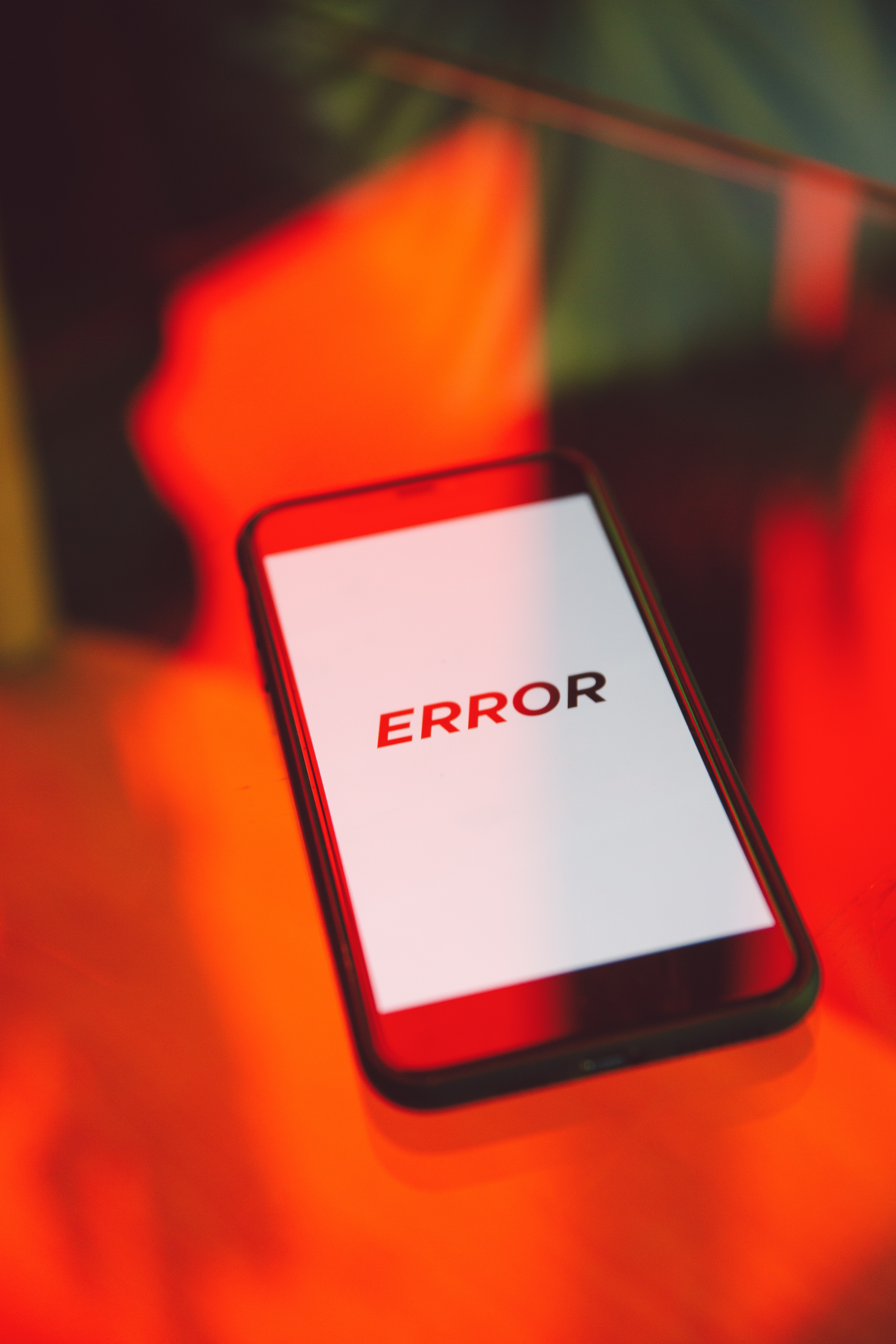Can fitness bands predict COVID-19 infection before you show symptoms? Probably not
WHOOP's wearables make strong claims — but the science is still weak
Wearable fitness technology companies claim to optimize athletic training, recovery, quality of sleep, and result in an overall increase in well-being. Although the accuracy of some of the devices have been called into question, studies have found that these wearable fitness trackers can promote behavioral changes associated with heart rate and daily step count that are linked in more active lifestyles.
However, what happens when one of these companies publicly claims to be able to predict the risk of infection from a disease?
WHOOP is a wearable fitness technology company that has received media interest for claims of being able to predict risk of COVID-19 earlier than the onset of noticeable symptoms. They claim that monitoring the user’s resting respiration rate (taken when the user's breathing rate is the lowest, at night) can help in early detection of the virus. COVID-19 is, first and foremost, a respiratory tract infection that can cause respiratory distress. If the WHOOP app notices any abnormal variation in the user’s resting breathing rate, wearers may receive a notice that they are at risk of being infected by COVID-19. By being able to identify any abnormality in respiration, users could potentially get tested and isolate themselves earlier than they would otherwise.
The company, which has financial backing from the co-founder of Twitter Jack Dorsey and NBA basketball player Kevin Durant, received even further attention when pro-golfer Nick Watney was alerted, accurately, via the WHOOP app that he may have COVID-19. This led to the PGA tour acquiring WHOOP straps for its employees and athletes. But besides anecdotal accounts, what is the scientific evidence that this fitness strap can accurately predict COVID-19 infection from respiration rate?

SARS-CoV-2, coronavirus (magenta), emerging from a cell (green) cultured in a lab
Only one study exists examining WHOOP’s claims regarding COVID and, despite media outlets reporting this paper as scientific evidence of the validity of the device, it has yet to be peer-reviewed. Incidentally, this study was funded by WHOOP, and was also a collaborative effort with researchers from Central Queensland University and WHOOP. Laying aside the bias of being conducted and funded by WHOOP, this study, at least on the surface, seems to have positive results. WHOOP's algorithm to track respiration rate was able to identify 20 percent of COVID-19 positive individuals two days before those users started reporting symptoms, and 80 percent of positive cases by day three of reported symptoms. Identifying a COVID-19 infection this early would allow patients to get tested and isolate themselves much earlier, potentially slowing the spread of the disease.
Unfortunately, the positive results seem less impressive when diving into the study's methods. WHOOP was tasked with creating an algorithm that could monitor nightly variation of respiration rate and identify abnormal readings as a possible COVID-19 infection. However, no long-term investigations studying nightly variation in respiratory rate have been conducted. The investigators’ solution was to use their own user’s data in order to create a baseline for normal nightly respiratory variation. This supplementary dataset used 25,000 users' nightly data, accounting for 750,000 nights of sleep. By doing so, WHOOP's study works under the assumption that their device is fully accurate in its ability to measure respiration rate.

No long-term investigations studying nightly variation in respiratory rate have been conducted.
Since these devices were originally intended for promoting positive behavioral changes such as increased physical activity and improved quality of sleep, precise accuracy (as required in clinical medicine) was not necessary. Currently, only one peer-reviewed paper validating the WHOOP strap’s accuracy in measuring respiration rate at night exists. The results were positive and conclude that WHOOP is accurate compared to the gold standard, inductance plethysmography, which measures the movement of the chest and abdominal wall to calculate respiratory rate. However, the number of participants in this study was low, and the researchers only used one night of sleep to evaluate the strap’s accuracy. A larger, more extensive clinical study would likely be required to validate the accuracy of the WHOOP strap.
Potential problems also exist in the inclusion criteria for subjects. For this investigation, all subjects were already WHOOP customers and either had already begun self-reporting COVID-19 symptoms or had been tested for COVID-19 infection. This choice in inclusion criteria represents a methodological problem as the population used in this study may not be representative of the general population as a whole. Using only WHOOP users could affect the sensitivity of the algorithm as the demographics may not accurately reflect the general populace. And by only including subjects that were already self-reporting COVID-19 symptoms or had already undergone testing, subjects experienced a much higher rate of infection than the general population. Although the algorithm identified many of the COVID-19 positive cases in their investigation, its ability to predict infection in much larger populations with lower rates of infection, as well as ailments with similar symptoms, remains untested.
Indeed, monitoring respiration rate in a population that likely has been exposed to COVID-19 may in fact be a potential tool for early detection. However, variation of respiratory rate is also a common symptom for many ailments such as mild infections. Unfortunately, WHOOP’s algorithm shows no ability to discriminate between a possible COVID-19 infection from any other pathological condition that features a variation in respiration, likely limiting any potentially useful application.
WHOOP's studies leave many unanswered questions regarding their strap's relative accuracy, as well as ability to predict risk of COVID-19 infection in a clinically useful way. And yet it is entirely possible that the fitness band does everything that it is purported to do. However, when a brand or company takes a step into the realm of clinical medicine — by claiming ability to predict risk of infection from disease, for instance — such claims need to be rigorously investigated.
Unfortunately for WHOOP, there is a lack of empirical evidence that would likely prevent this type of technology from being widely used in the fight against the spread of COVID-19 infection. WHOOP represents a useful reminder to maintain a healthy skepticism when dealing with claims from a company, especially in regards to the health and wellbeing of the consumer.
Peer Commentary
Feedback and follow-up from other members of our community
Francesco Zangari
Molecular Biology
University of Toronto
As a big fan of fitness trackers and all the statistics they generate, this is a really cool story Matthew. I have always liked knowing my step count, heart rate, sleep pattern etc, but I have often wondered about how accurate these are. As such, I often took these numbers with a grain of salt and used them more as positive indicators rather than relying on them as serious health metrics.
WHOOP trackers are unique in this case as they come with claims to best improve athletic performance by delivering key and unique information about the body’s physiological state. However, as pointed out in this story, we can see the danger of this in this company purporting itself as a tool to detect COVID-19. Not to mention, owning a WHOOP could discourage users in being proactive with looking for symptoms and promote reliance on the device to guide health decisions.
These claims are also troublesome because WHOOP has secured a recent deal with the PGA tour after an anecdotal report by a golfer, making this strategy profitable as well. In relation to other fitness trackers, WHOOP also remains quite expensive with a $30 USD membership fee (minimum six month commitment) and could use their claims of being COVID-19 detectors to boost subscriptions.
The one thing that keeps sticking out in my mind here is role of government and regulatory agencies. Can they/are there plans to address WHOOP’s largely baseless claims?
Thank you for the commentary! I will be very interested if the FDA starts getting involved in the regulation of these devices. Just last year there were announcements that some health apps were going to be subject to regulation by the FDA but specifically did not designate fitness trackers as “medical devices” as they posed little risk to the consumer. I wonder if WHOOP just opened themselves up to regulation of the FDA with their claims of being able to detect risk of COVID?
Celia Ford
University of California, Berkeley
I was drawn to this article as a long-time skeptic of wearable fitness technology — as someone recovering from a disordered relationship with food and exercise, I often find devices that monitor things like steps counts triggering.
But I could get on board with WHOOP, if its promise ever pans out: tracking respiration rate for the sake of early disease detection seems to be, in theory, exactly what these wearable devices were made for, without any of the disordered-body-image baggage.
As Matthew points out, however, WHOOP was only designed to be as accurate as a fitness tracker needs to be: not very. Given the lack of empirical evidence for its COVID-19 detection accuracy, I hope that the company behind WHOOP doesn’t further promote misleading claims for the sake of positive branding. And, looking forward, I hope that the biotech industry continues to improve the measurement accuracy of these wearable devices, so that their public health potential may one day be fully realized.